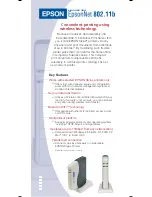
53
Chapter 5: BIOS
If the above is set to Enable, CPU P State will display:
CPU P State Control
P State Domain
This feature allows the user to indicate the P-State domain for each logical process in the
system. All processes indicate the same domain in the same package. The options are
ALL
and ONE.
P-State Coordination
This feature allows the user to change the P-State (Power-Performance State) coordination
type. P-State is also known as "SpeedStep" for Intel processors. Select HW_ALL to change
the P-State coordination type for hardware components only. Select SW_ALL to change
the P-State coordination type for all software installed in the system. Select SW_ANY to
change the P-State coordination type for a software program in the system. The options
are
HW_All,
SW_ALL, and SW_ANY.
Energy Efficient P-State
Select Enable to support power-saving mode for P-State. The options are Disable and
Enable.
Boot Performance Mode
This feature allows the user to select the performance state that the BIOS will set before
the operating system handoff. The options are
Max Performance
and Max Efficient.
Turbo Mode
Select Enable for processor cores to run faster than the frequency specified by the
manufacturer. The options are Disable and
Enable
.
CPU HWPM State Control
Enable CPU HWPM
Select Enable for better CPU energy performance. The options are
Disable
, HWPM NATIVE
MODE, and HWPM OOB MODE.
Enable CPU Autonomous Cstate
Use this feature to enable CPU Autonomous C State, which converts HALT instructions to
Mwait. The options are
Disable
and Enable.
CPU C State Control
CPU C State
Use this feature to enable the enhanced C State of the CPU. The options are Disable and
Enable
.
















































